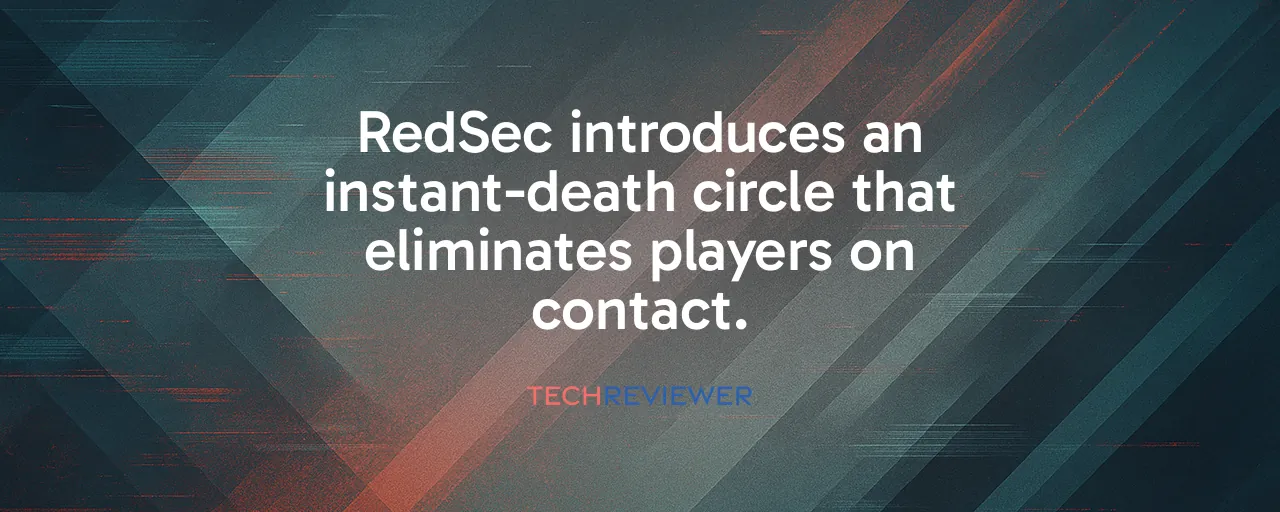A Circle That Bites
Battlefield 6’s RedSec, set to surprise players on October 28, 2025, flips the battle royale script with a mechanic that’s as brutal as it sounds: an instant-death circle. Unlike the slow-burn damage zones in games like Warzone or Fortnite, RedSec’s fiery wall eliminates players on contact, no second chances. Picture a squad sprinting for cover as the circle closes, only to see a teammate vanish in a split second. This high-stakes twist, revealed through leaks by ModernWarzone, forces players to rethink positioning and ditch the edge-camping tricks that dominate other titles.
The mode, a free-to-play standalone within Battlefield 6, supports 100 players in squads of four, blending the franchise’s signature chaos with fresh ideas. Visual warnings flash when you’re within 10 meters of the circle, giving just enough time to scramble. Early playtests through Battlefield Labs in September 2025 showed players adapting quickly, with some praising the intensity and others sweating the unforgiving pace. EA’s betting this bold mechanic will carve a niche in a genre packed with heavyweights.
Tactical Chaos Meets Destruction
RedSec doesn’t just lean on its deadly circle. It doubles down on Battlefield’s core strengths: vehicles, squads, and destruction. The mode introduces Tactical Destruction, where buildings collapse in predictable ways when blasted enough, letting players learn and exploit patterns. Imagine dropping a skyscraper’s corner to block an enemy’s escape or clearing a sightline for a sniper shot. This isn’t the free-for-all chaos of earlier Battlefield titles but a calculated system designed for strategic depth.
Vehicles add another layer, from zippy transports to heavy armored tanks that spawn as match-defining rewards. Unlike Apex Legends’ hero-driven shootouts, RedSec emphasizes squad roles and combined arms. Playtests tweaked time-to-kill values to reward smart positioning while giving players a fighting chance. Everyone starts with one armor plate, lootable up to two, balancing accessibility with progression. These elements aim to make RedSec feel like Battlefield while shaking up the battle royale formula.
Lessons From the Past
EA’s been here before, and the scars show. Firestorm, Battlefield V’s 2019 battle royale, launched to a million returning players but fizzled fast. Locked behind a paid game and starved of updates, it couldn’t compete with Apex Legends, which dropped the same year and hit 25 million players in a week thanks to polished gameplay and influencer hype. Firestorm’s fade taught EA the value of sustained content and free access, lessons RedSec seems to apply with its standalone, free-to-play model.
Apex Legends’ success offers another lesson: surprise launches work when paired with polish and community buzz. Its February 2019 shadow drop leaned on streamers and tight mechanics to dominate. RedSec’s October 28 launch, tied to Battlefield 6’s record-breaking beta that drew 521,000 concurrent Steam players, aims for similar buzz but skips traditional trailers. The risk? Without pre-launch hype, EA must nail execution, or RedSec could echo Hazard Zone’s 2021 flop, a confusing extraction mode that died within weeks.
Facing a Crowded Arena
With these bold mechanics, EA’s betting big on a crowded market. Battle royale games, valued at 10.13 billion dollars in 2024, are projected to hit 22.42 billion by 2032, driven by free-to-play models and esports. But giants like Fortnite, Warzone, and Apex Legends dominate, with years of content and loyal players. RedSec’s free entry lowers the barrier, especially for younger gamers, but faces skepticism after Battlefield 2042’s rocky launch. The shadow drop, while surprising, leaves little time for community building or streamer partnerships, critical for sustained traction.
Players have mixed feelings. Battlefield veterans crave the franchise’s large-scale warfare, but some worry the instant-death circle might feel unfair. Warzone fans, used to forgiving damage zones, could find RedSec’s pace jarring. Still, the mode’s squad focus and destruction mechanics offer a fresh angle. EA’s challenge is keeping players hooked with regular updates, fair monetization, and stable servers, especially with competitors offering polished ecosystems.
Can EA Pull It Off?
RedSec’s success hinges on execution. The instant-death circle and tactical destruction promise thrilling moments, but they must feel fair and fun. EA’s recent wins with Battlefield 6’s launch, praised for returning to the franchise’s roots, give hope. Yet, the shadow drop strategy is a gamble. Without months of hype, EA relies on word-of-mouth and content creator buzz to drive adoption. Partnerships with streamers or esports groups could amplify reach, but only if the gameplay delivers.
Monetization will also make or break RedSec. With regulatory eyes on loot boxes and microtransactions, EA needs a balanced approach that avoids pay-to-win traps. The mode’s social features, like squad-based play and voice chat, could foster tight-knit communities, but robust moderation is essential to curb toxicity. If EA learns from Firestorm’s neglect and Apex’s polish, RedSec could carve a lasting spot. If not, it risks fading into the genre’s crowded graveyard.
